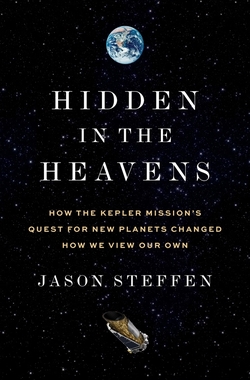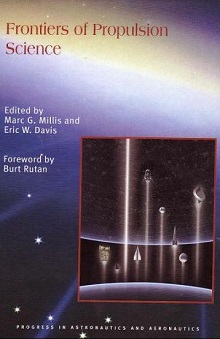Alex Tolley follows up his analysis of agriculture on Mars with a closer look at the Interstellar Research Group’s MaRMIE project – the Martian Regolith Microbiome Inoculation Experiment. Growing out of discussions on methods beyond hydroponics to make the Red Planet fertile, the project is developing an experimental framework, as described below, to test our assumptions about Martian regolith here on Earth. A path forward through simulation and experiment could help us narrow the options for what may be possible for future colonists. Fertile regolith, achieved through perchlorate removal, would open up possibilities far beyond what is achievable through hydroponics. by Alex Tolley Successful settlement of distant locations requires living off the land, which requires resourcing food. Failure can lead to disaster, as experienced by some of the early American colonies. While near Earth space settlements could be supplied with packaged food, this would be too costly for an expanding...
Food production on Mars: Dirt farming as the most scalable solution for settlement
Colonies on other worlds are a staple of science fiction and an obsession for rocket-obsessed entrepreneurs, but how do humans go about the business of living long-term once they get to a place like Mars? Alex Tolley has been pondering the question as part of a project he has been engaged in with the Interstellar Research Group. Martian regolith is, shall we say, a challenge, and the issue of perchlorates is only one of the factors that will make food production a major part of the planning and operation of any colony. The essay below can be complemented by Alex’s look at experimental techniques we can use long before colonization to consider crop growth in non-terrestrial situations. It will appear shortly on the IRG website, all part of the organization’s work on what its contributors call MaRMIE, the Martian Regolith Microbiome Inoculation Experiment. by Alex Tolley Introduction: Food Production Beyond Hydroponics Conventional wisdom suggests that food production in the Martian...
An Appreciation of SETI’s Robert Gray (1948-2021)
Robert Gray was something of an outsider in the community of SETI scientists, spending most of his career in the world of big data, calculating mortgage lending patterns and examining issues in urban planning from his office in Chicago. As an independent consultant specializing in data analysis, his talents were widely deployed. But SETI was a passion more than a hobby for Gray, and he became highly regarded by scientists he worked with, many of whom were both surprised to hear of his death on December 6, 2021. It was Jim Benford who gave me the news just recently, and it humbles me to think that a Centauri Dreams post I worked with Gray to publish (How Far Can Civilization Go?) appeared just months before he died. Gray’s independent status accounts for the lack of publicity about his death in our community, but I’m still startled that I’m only now learning about it. His name certainly has resonance on this site, particularly his book The Elusive Wow: Searching for Extraterrestrial...
The Value of LHS 475b
LHS 475b, a planet whose diameter is all but identical to Earth's, makes news not so much because of what it is but because of what it tells us about studying the atmospheres of small rocky worlds. Credit for the confirmation of this planet goes to the NIRSpec (Near-Infrared Spectrograph) instrument aboard the James Webb Space Telescope, and LHS 475b marks the telescope’s first exoplanet catch. Data from the Transiting Exoplanet Survey Satellite (TESS) were sufficient to point scientists toward this system for a closer look. JWST confirmed the planet after only two transits. Based on this detection, the Webb telescope is going to live up to expectations about its capabilities in exoplanet work. NIRSpec is a European Space Agency contribution to the JWST mission, and a major one, as the instrument’s multi-object spectroscopy mode is able to obtain spectra of up to 100 objects simultaneously, a capability that maximizes JWST observing time. No other spectrograph in space can do this,...
Sunvoyager’s Pedigree: On the Growth of Interstellar Ideas
Kelvin Long’s new paper on the mission concept called Sunvoyager would deploy inertial confinement fusion, described in the last post, to drive a spacecraft to 1000 AU in less than four years. The number pulsates with possibilities: A craft like this would move at 325 AU per year, or roughly 1500 kilometers per second, ninety times the velocity of Voyager 1. This kind of capability, which Long thinks we may achieve late in this century, would open up all kinds of fast science missions to the outer planets, the Kuiper Belt, and even the inner Oort Cloud. And the conquest of inertial confinement methods would open the prospect for later, still faster missions to nearby stars. Sunvoyager draws on the heritage of the Daedalus starship, that daring design conceived by British Interplanetary Society members in the 1970s, but as we saw last time, inertial confinement fusion (ICF) was likewise examined in a concept called Vista, and one of the pleasures of this kind of research for a...
SunVoyager: A Fast Fusion Mission Beyond the Heliosphere
1000 AU makes a fine target for our next push past the heliosphere, keeping in mind that good science is to be had all along the way. Thus if we took 100 years to get to 1000 AU (and at Voyager speeds it would be a lot longer than that), we would still be gathering solid data about the Kuiper Belt, the heliosphere itself and its interactions with the interstellar medium, the nature and disposition of interstellar dust, and the plasma environment any future interstellar craft will have to pass through. We don’t have to get there fast to produce useful results, in other words, but it sure would help. The Thousand Astronomical Unit mission (TAU) was examined by NASA in the 1980s using nuclear electric propulsion technologies, one specification being the need to reach the target distance within 50 years. It’s interesting to me – and Kelvin Long discusses this in a new paper we’ll examine in the next few posts – that a large part of the science case for TAU was stellar parallax, for...
Gathering the Evidence for Life on Enceladus
With a proposal for an Enceladus Orbilander mission in the works at the Johns Hopkins Applied Physics Laboratory, I continue to mull over the prospects for investigating this interesting moon. Something is producing methane in the ocean under the Enceladus ice shell, analyzed in a 2021 paper from Antonin Affholder (now at the University of Arizona) and colleagues, using Cassini data from passages through the plumes erupting from the southern polar regions. The scientists produced mathematical models and used a Bayesian analysis to weigh the probabilities that the methane is being created by life or through abiotic processes. The result: The plume data are consistent with both possibilities, although it’s interesting, based on what we know about hydrothermal chemistry on earth, that the amount of methane is higher than would be expected through any abiotic explanation. So we can’t rule out the possibility of some kind of microorganisms under the ice on Enceladus, and clearly need data...

